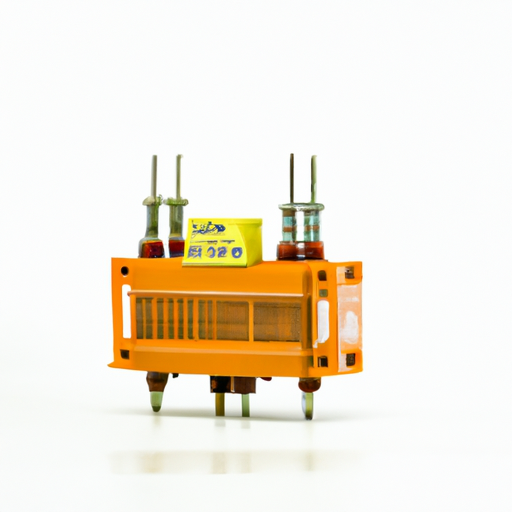Pulse transformers are essential components in various electronic devices and systems. They are widely used in applications such as power supplies, telecommunications, data transmission, and audio equipment. Pulse transformers play a crucial role in transferring electrical energy between circuits while maintaining isolation and impedance matching. In this article, we will explore the popular pulse transformer product types, their characteristics, and applications.

2. Forward Transformers: Forward transformers are similar to flyback transformers in terms of their operation principle. However, they are primarily used in forward converter circuits, which are widely employed in power supply applications. Forward transformers transfer energy from the input to the output circuit during the on-time of the switching transistor. They offer high efficiency and excellent regulation, making them suitable for applications that require precise voltage regulation, such as computer power supplies and industrial equipment.
3. Gate Drive Transformers: Gate drive transformers are specifically designed to provide isolated drive signals to power semiconductor devices, such as MOSFETs and IGBTs. These transformers are crucial in applications where high voltage and high-speed switching are required, such as motor drives, power inverters, and industrial control systems. Gate drive transformers ensure proper isolation between the control circuitry and the power circuitry, protecting sensitive control components from high voltage transients and noise.
4. Audio Transformers: Audio transformers are widely used in audio equipment, such as amplifiers, mixers, and audio interfaces. These transformers are designed to transfer audio signals while maintaining impedance matching and galvanic isolation. Audio transformers help in eliminating ground loops, reducing noise, and improving the overall audio quality. They are available in various configurations, including input transformers, output transformers, and interstage transformers, each serving a specific purpose in the audio signal chain.
5. Telecom Transformers: Telecom transformers, also known as line transformers, are extensively used in telecommunications systems, including telephone networks and data transmission equipment. These transformers provide impedance matching and isolation between different sections of the communication system, ensuring efficient signal transfer and minimizing signal degradation. Telecom transformers are designed to handle a wide range of frequencies and provide reliable performance in harsh environments.
6. Pulse Coupled Transformers: Pulse coupled transformers, also referred to as pulse transformers, are commonly used in digital communication systems, such as Ethernet and data transmission networks. These transformers are designed to transmit digital signals with high-speed and minimal distortion. Pulse coupled transformers provide impedance matching and isolation between the transmitter and receiver circuits, ensuring accurate signal transmission and reception.
In conclusion, pulse transformers are essential components in various electronic systems, providing isolation, impedance matching, and efficient energy transfer. The popular pulse transformer product types include flyback transformers, forward transformers, gate drive transformers, audio transformers, telecom transformers, and pulse coupled transformers. Each type serves specific applications, ranging from power supplies and audio equipment to telecommunications and data transmission systems. Understanding the characteristics and applications of these pulse transformer types is crucial for engineers and designers to select the most suitable transformer for their specific requirements.
Pulse transformers are essential components in various electronic devices and systems. They are widely used in applications such as power supplies, telecommunications, data transmission, and audio equipment. Pulse transformers play a crucial role in transferring electrical energy between circuits while maintaining isolation and impedance matching. In this article, we will explore the popular pulse transformer product types, their characteristics, and applications.

2. Forward Transformers: Forward transformers are similar to flyback transformers in terms of their operation principle. However, they are primarily used in forward converter circuits, which are widely employed in power supply applications. Forward transformers transfer energy from the input to the output circuit during the on-time of the switching transistor. They offer high efficiency and excellent regulation, making them suitable for applications that require precise voltage regulation, such as computer power supplies and industrial equipment.
3. Gate Drive Transformers: Gate drive transformers are specifically designed to provide isolated drive signals to power semiconductor devices, such as MOSFETs and IGBTs. These transformers are crucial in applications where high voltage and high-speed switching are required, such as motor drives, power inverters, and industrial control systems. Gate drive transformers ensure proper isolation between the control circuitry and the power circuitry, protecting sensitive control components from high voltage transients and noise.
4. Audio Transformers: Audio transformers are widely used in audio equipment, such as amplifiers, mixers, and audio interfaces. These transformers are designed to transfer audio signals while maintaining impedance matching and galvanic isolation. Audio transformers help in eliminating ground loops, reducing noise, and improving the overall audio quality. They are available in various configurations, including input transformers, output transformers, and interstage transformers, each serving a specific purpose in the audio signal chain.
5. Telecom Transformers: Telecom transformers, also known as line transformers, are extensively used in telecommunications systems, including telephone networks and data transmission equipment. These transformers provide impedance matching and isolation between different sections of the communication system, ensuring efficient signal transfer and minimizing signal degradation. Telecom transformers are designed to handle a wide range of frequencies and provide reliable performance in harsh environments.
6. Pulse Coupled Transformers: Pulse coupled transformers, also referred to as pulse transformers, are commonly used in digital communication systems, such as Ethernet and data transmission networks. These transformers are designed to transmit digital signals with high-speed and minimal distortion. Pulse coupled transformers provide impedance matching and isolation between the transmitter and receiver circuits, ensuring accurate signal transmission and reception.
In conclusion, pulse transformers are essential components in various electronic systems, providing isolation, impedance matching, and efficient energy transfer. The popular pulse transformer product types include flyback transformers, forward transformers, gate drive transformers, audio transformers, telecom transformers, and pulse coupled transformers. Each type serves specific applications, ranging from power supplies and audio equipment to telecommunications and data transmission systems. Understanding the characteristics and applications of these pulse transformer types is crucial for engineers and designers to select the most suitable transformer for their specific requirements.